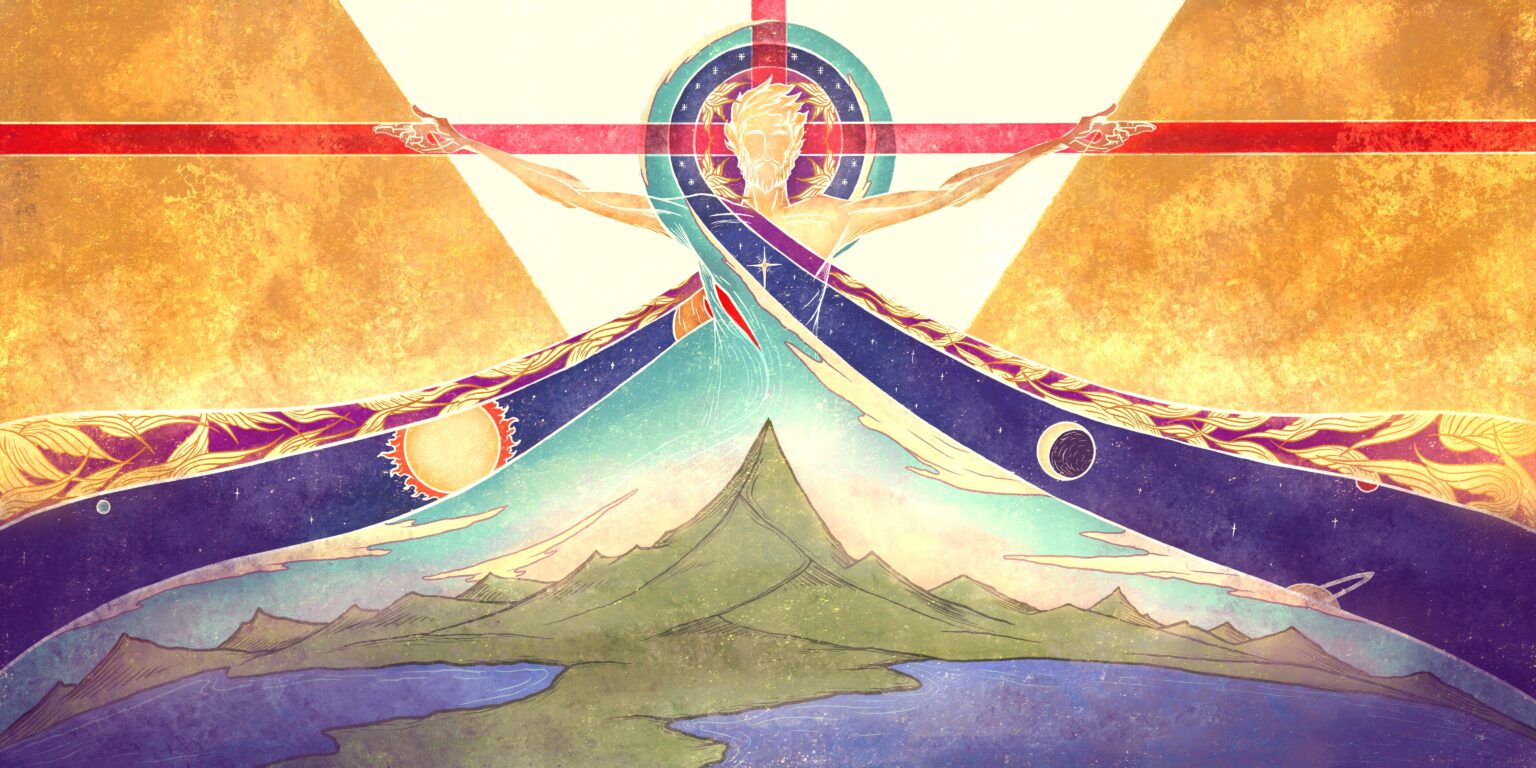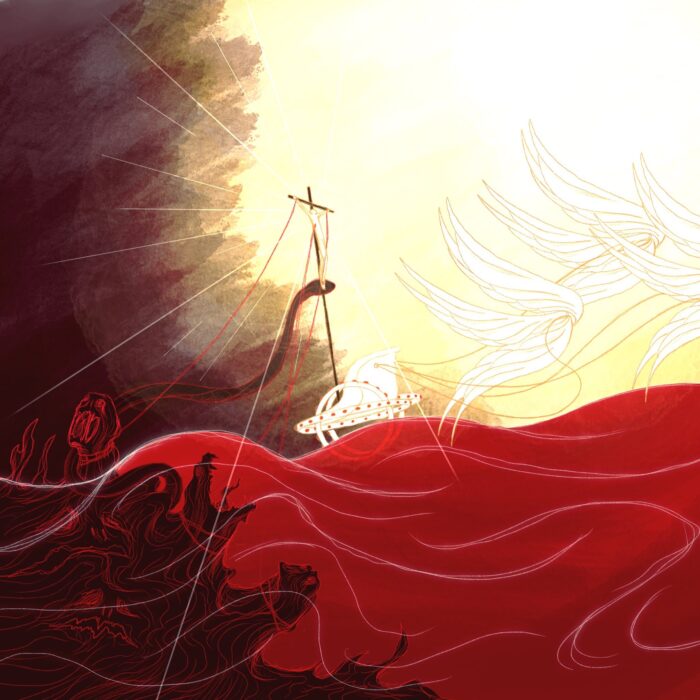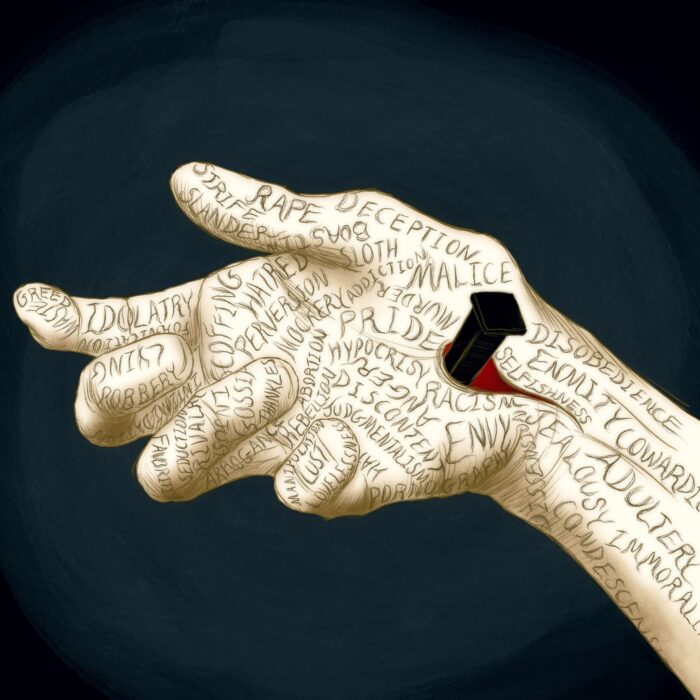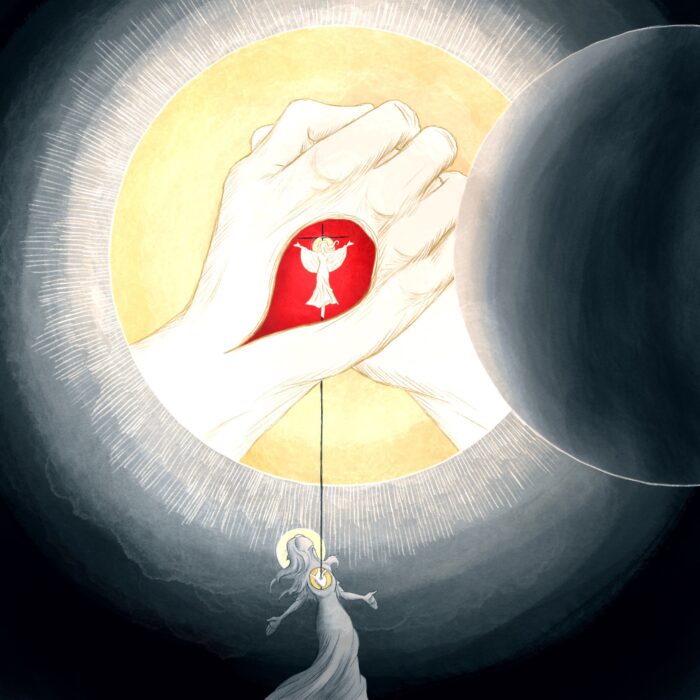Colossians 1:19-20a, ‘For in Him all the fullness of God was pleased to dwell, and through Him to reconcile to Himself all things, whether on earth or in heaven…’
[This illustration is for pages 8-9 of the upcoming Colossians board book.] Two life-alteringly beautiful realities are bound up in these few words of the Apostle.
First, that everything God is—all that it means to be God, the full richness, depth, and soul-satisfying splendor of who God is—dwells joyfully, completely, and perfectly in the One who hangs on Calvary’s cross and rises on the third day. Every philosophy, theology, worldview, and lifestyle is searching (though they may not use these words) for the ‘fullness of God’—i.e., for what really matters, for what we were made to know, for that deep and awesome glory that every taste of existential wonder reminds us is just under the surface and just out of reach…But in Jesus Christ, crucified and raised up, that fullness appears to the eyes of faith with perfect, soul-ravishing clarity…Here—in the one who dies in this way and rises beyond all death—we behold our God.
And secondly, that in this crucified and risen One, *all things* have been and will be reconciled to God. When the natural eye looks at this world, it sees a cacophony of confusion—horrific agonies, meaningless suffering, monstrous wickedness toward the weakest among us, conflicting voices calling for incompatible solutions…But, though the eye of faith sees this as well, it sees something more: It sees all of the madness, the pain, the confusion and the sin, gathered up into the arch-suffering of Christ on the cross such that—by His resurrection-interpreted Passion—the cacophony of creation is transposed to the hymn of heaven, harmonized to the melody of God’s own Name…Just as a super-massive object draws all things into ever-increasing orbit around itself, so the ‘gravity’ of the redemptive revelation of God in Christ at the resurrection-illumined cross draws all of time and space, all of sorrow and suffering, all of madness and chaos, into orbit around the slain and risen Lamb, and turning of those wheels is an everlasting song of praise to our God.
So, in the visual exegesis of this text, I’ve made three ‘layers’ clearly present: First the ‘earth’ (land, sea, and sky/first heaven), then the ‘second heaven’ (sun, moon, stars and luminaries), and finally the ‘third heaven,’ (the place of the angels, throne room, etc). These visualize the text’s ‘all things, in heaven and on earth.’ Within those three, and especially within the first, is represented all the confusion and chaos of the fallen world. However, all three are depicted as being gathered together and drawn into orbit (‘reconciled’) around the crucified and risen Jesus.
The totality of creation forms the halo around the head of the risen Lord, representing the fact that *all things* do now—and will perfectly in the eschaton—declare the glory, the beauty, the splendor of Christ, who is Himself the image of God (we are reminded of this by the four heavenly creatures immediately around Christ’s head, indicated that He is the visible face of the One seated on the throne).
From the Lord’s haloed head extends three red beams of light, these echo the form of the cross and remind us that this final reconciliation is secured ‘by the blood of His cross’ (v.20b). Intersecting these beams, the Lord’s arms are extended in a posture that is simultaneously cruciform and victorious—the image of God is the indivisible slain-and-risen One.
Finally, rising up from the center of the New Creation and extending through Christ’s wounded hands, is a triangle of white light. This depicts the Trinitarian fullness of the One True God as revealed in the person of the slain and risen Jesus. The lines continually open upward and outward through Jesus’ wounds since the reconciliation achieved by His death and resurrection gathers all things—and invites all people who will believe—into an eternally deepening embrace of all the fullness of God for us in the slain and risen Son.




